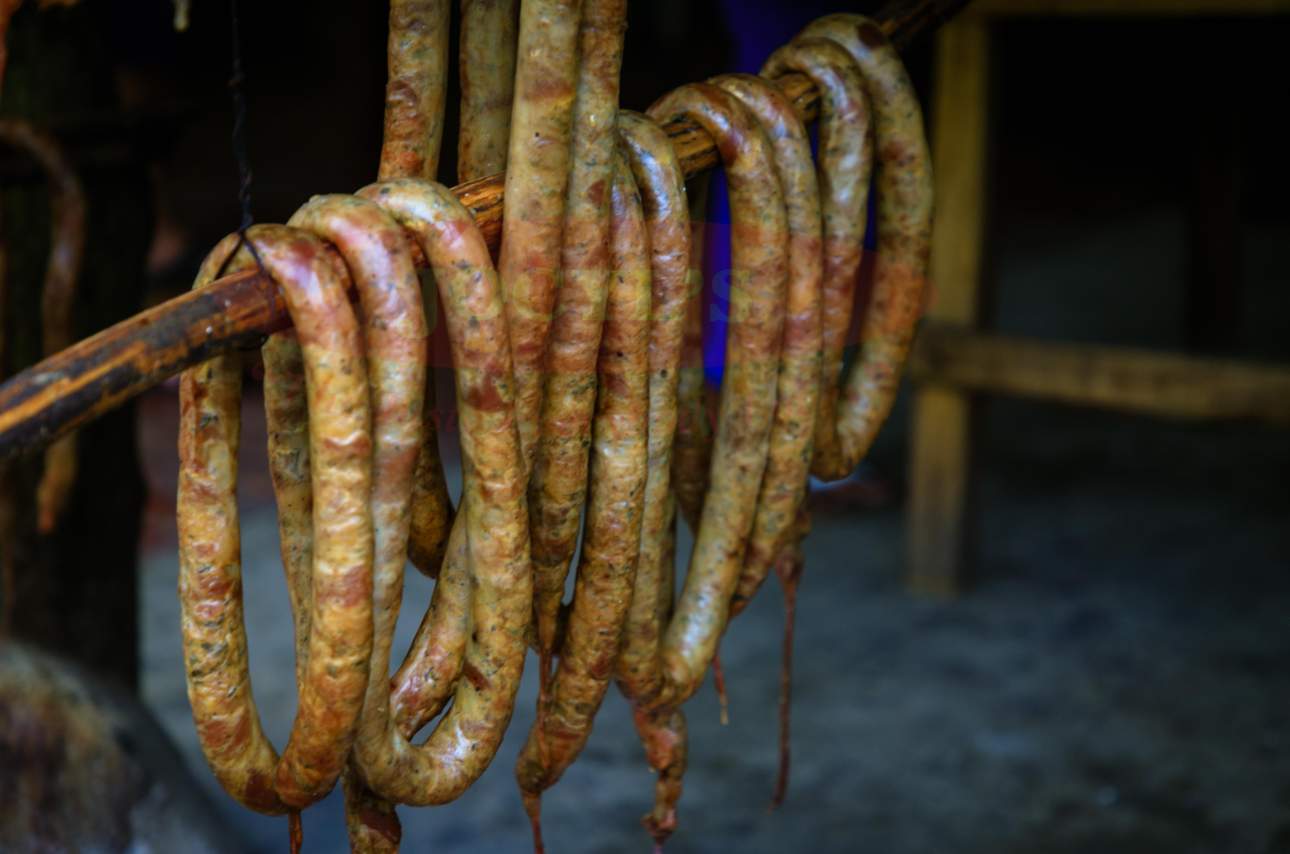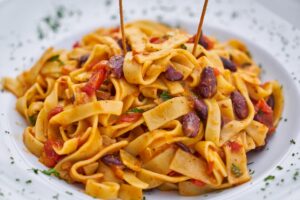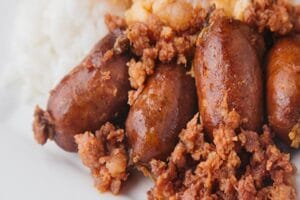
About Us
Jocyl's Food Products (a.k.a "Chorizo de Kalibo") is a bold and forward-thinking company whose goals are set to create surprising ways of developing and promoting our products. We are entrepreneurial and visionary in producing and marketing the best chorizo and other food products from our hometown - Kalibo, Aklan, Philippines.
About UsContact Info
- Tigayon Highway, Barangay Tigayon, Kalibo, Aklan
- +63362628688
- jocylsfoods@gmail.com
- Tigayon Highway, Barangay Tigayon, Kalibo, Aklan
- jocylsfoods@gmail.com
- +63362628688

From Ancient Roots to Modern Delicacy: Longaniza History and Origin Unraveled
-
Jocyl's Food Products > Blog > Delicacies > From Ancient Roots to Modern Delicacy: Longaniza History and Origin Unraveled
Introduction to Longaniza History and Origin
Longaniza, a flavorful and savory sausage, has captivated the taste buds of people worldwide. With a rich history dating back centuries, this culinary delight has become a beloved staple in various cuisines. In this article, we embark on a journey to explore the fascinating history and origin of Longaniza, tracing its ancient roots to its status as a modern delicacy. Join us as we unravel the story behind this mouthwatering sausage.
The Origins of Longaniza: A Global Perspective
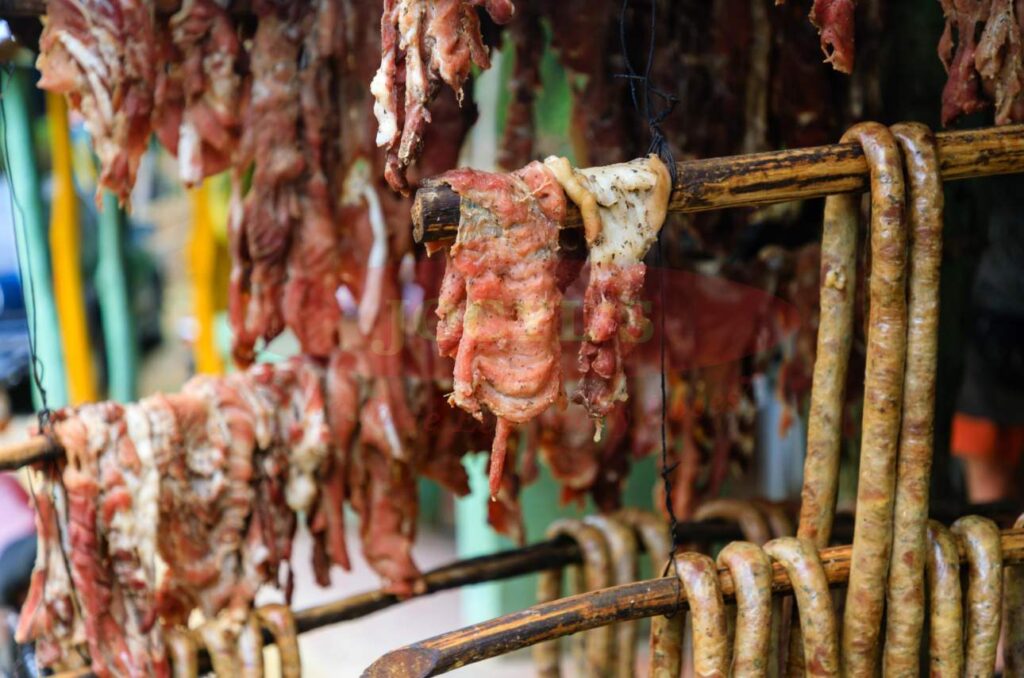
The Origins of Sausages
Sausages hold a significant place in culinary history, with their origins tracing back thousands of years. The concept of sausages emerged as a way to preserve and utilize various parts of animals for consumption. In ancient times, people discovered that by grinding and mixing meat with seasonings and other ingredients, they could create a flavorful and easily portable food product.
Sausages were initially developed by early civilizations as a means to extend the shelf life of meat. By stuffing ground meat into animal intestines or other casings, they found a way to store and transport meat for extended periods without spoilage. The invention of sausages revolutionized food preservation techniques and opened the doors to diverse culinary creations.
Ancient Influences on Longaniza
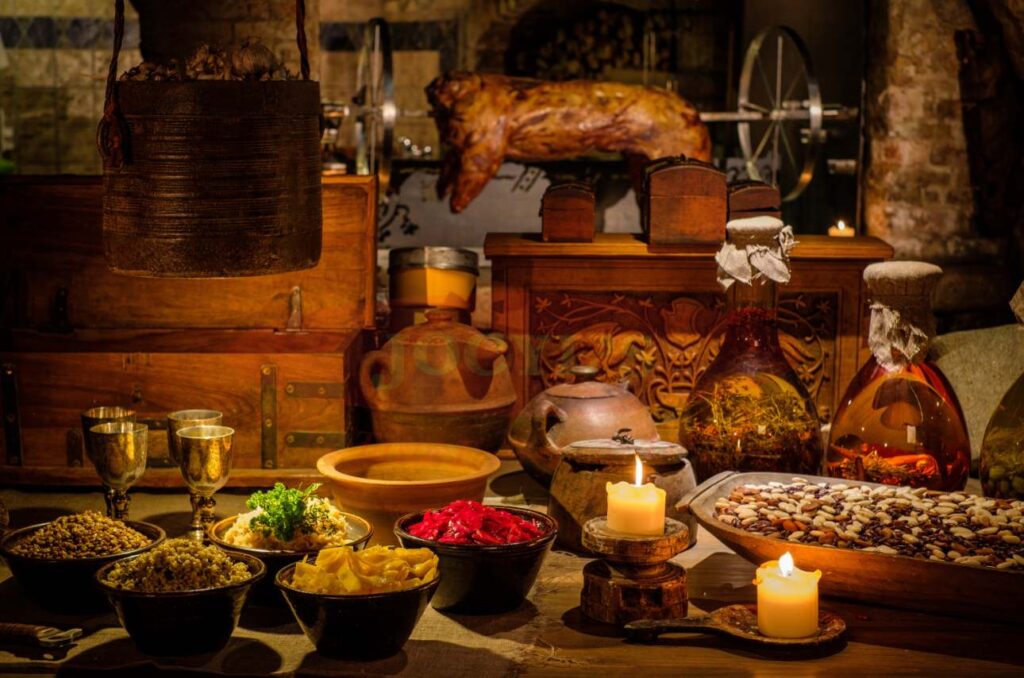
Longaniza, with its rich history and distinct flavors, owes its development to various ancient civilizations and cultures. The Mediterranean, Middle Eastern, and Asian culinary traditions played a significant role in shaping the evolution of Longaniza.
In the Mediterranean region, the ancient Greeks and Romans embraced the art of sausage making. They seasoned ground meat with a blend of herbs, spices, and other flavorful ingredients, which set the foundation for the creation of sausages that are still enjoyed today. The popularity of these sausages spread across the Mediterranean, influencing the development of Longaniza.
Moving eastward, the Middle Eastern culinary traditions brought their unique techniques and flavors to the creation of sausages. The use of aromatic spices, such as cumin, coriander, and cinnamon, added depth and complexity to the sausages. These influences can be seen in the flavor profiles of some variations of Longaniza.
Asian cultures also contributed to the development of Longaniza. Chinese, Indian, and Southeast Asian cuisines incorporated their own distinct flavors and ingredients into sausage-making practices. The use of soy sauce, ginger, lemongrass, and other Asian spices added a new dimension to the sausage-making process, creating unique variations of Longaniza.
The convergence of these ancient culinary traditions, along with the exchange of goods and ideas through trade routes, resulted in the diverse and rich flavors found in Longaniza today. As we continue our exploration, we will delve deeper into the historical journey of Longaniza, uncovering its ancient roots and the cultural influences that have shaped its evolution.
Longaniza: A Journey Through Time – History and Origin
Ancient Roots: The Early Development
Embark on a fascinating exploration of Longaniza’s ancient roots, tracing its origins back to early civilizations. Through historical evidence and culinary remnants, we uncover intriguing clues that suggest the presence of similar sausages in ancient cultures.
Longaniza’s story begins in the mists of time, where early civilizations discovered the art of transforming meat into flavorful sausages. These early pioneers developed techniques to grind and mix various cuts of meat, adding a blend of herbs, spices, and seasonings to create tantalizing flavors.
Archaeological findings provide glimpses into the ancient origins of sausages. In ancient Mesopotamia, evidence of sausage-like creations has been unearthed, dating back over 5,000 years. The people of this region were known for their innovative culinary practices, using a combination of meats and spices to create savory sausages.
Further afield, ancient Egypt also played a part in the early development of sausages. The Nile Valley inhabitants skillfully combined ground meat, herbs, and spices, encasing the mixture in animal intestines. These ancient sausages served as portable and long-lasting provisions, sustaining travelers and explorers during their journeys.
Medieval Period: The Evolution of Longaniza
The medieval period witnessed significant transformations in the evolution of Longaniza. As different regions embraced sausage-making, local ingredients and cooking techniques gave rise to unique variations of this beloved sausage.
Across Europe, during the Middle Ages, Longaniza underwent a metamorphosis, adapting to the culinary preferences and available resources of each region. The inclusion of regional herbs, spices, and seasonings added distinct character and flavor profiles to the sausages.
In Spain, the birthplace of Spanish Longaniza, local ingredients such as paprika and garlic became integral to the recipe. These additions infused the sausages with a rich, smoky flavor that has become synonymous with Spanish cuisine.
Meanwhile, in the Mediterranean region, the use of aromatic herbs like oregano, thyme, and rosemary contributed to the development of regional variations of Longaniza. Each locality put its unique stamp on the sausage, creating a tapestry of flavors reflective of their cultural heritage.
Colonial Era: The Spread of Longaniza
The colonial era played a pivotal role in the global dissemination of Longaniza. European explorers and colonizers introduced the sausage to new territories, where it seamlessly assimilated into local cuisines.
Spanish colonizers, in particular, carried their culinary traditions and Longaniza recipes to various parts of the world. From the Philippines to Latin America, Spanish influence left an indelible mark on the local food cultures.
In the Philippines, Spanish Longaniza found a new home and became an integral part of Filipino cuisine. Adapted to local tastes, Filipino Longaniza incorporated indigenous ingredients and spices, resulting in a uniquely Filipino flavor profile.
In Latin America, Longaniza took on new forms as it blended with local ingredients and cooking techniques. Mexican Longaniza, for example, showcases a fusion of indigenous and Spanish flavors, with ingredients like chili peppers, achiote, and regional spices adding vibrant depth to the sausages.
The colonial era not only allowed Longaniza to travel across continents but also facilitated the exchange of culinary knowledge and practices. The sausage adapted to local resources, incorporating diverse ingredients and techniques, resulting in an array of regional variations.
As we continue our journey through Longaniza’s history, we delve deeper into the regional variations found around the world. Join us in the next section as we explore the distinctive characteristics of Spanish, Filipino, Mexican, and other international variations of this delectable sausage.
Regional Variations: Longaniza Around the World – History and Origin
Spanish Longaniza: A Culinary Tradition

Discover the origins of Spanish Longaniza, a renowned variety that has influenced the development of Longaniza in several countries. Immerse yourself in the rich culinary tradition that surrounds this delectable sausage, known for its distinct flavors, ingredients, and cooking methods.
Spanish Longaniza holds a special place in the hearts and palates of food enthusiasts. Originating in Spain, this variety of Longaniza is a testament to the country’s culinary heritage. The sausage is typically made from a combination of pork meat, fat, and a carefully curated blend of spices. The ingredients are meticulously ground and mixed, resulting in a flavor profile that balances the richness of the meat with the aromatic nuances of spices.
In Spain, regional variations of Longaniza have emerged, each with its own unique characteristics. For example, the Longaniza from Catalonia may include ingredients like garlic, fennel seeds, and black pepper, imparting a bold and aromatic taste. Meanwhile, in Castilla, paprika and other earthy spices add depth to the sausage’s flavor.
Spanish Longaniza is commonly enjoyed grilled, pan-fried, or incorporated into various traditional dishes. Its versatility and robust flavor make it a staple in Spanish cuisine, whether served as part of a tapas spread or as the star ingredient in hearty stews.
Filipino Longaniza: A Taste of the Philippines
Explore the distinctive characteristics of Filipino Longaniza, a beloved delicacy that showcases the unique flavors and culinary heritage of the Philippines. Delve into the world of this flavorful sausage and discover the local ingredients and spices that give it its distinctive taste.
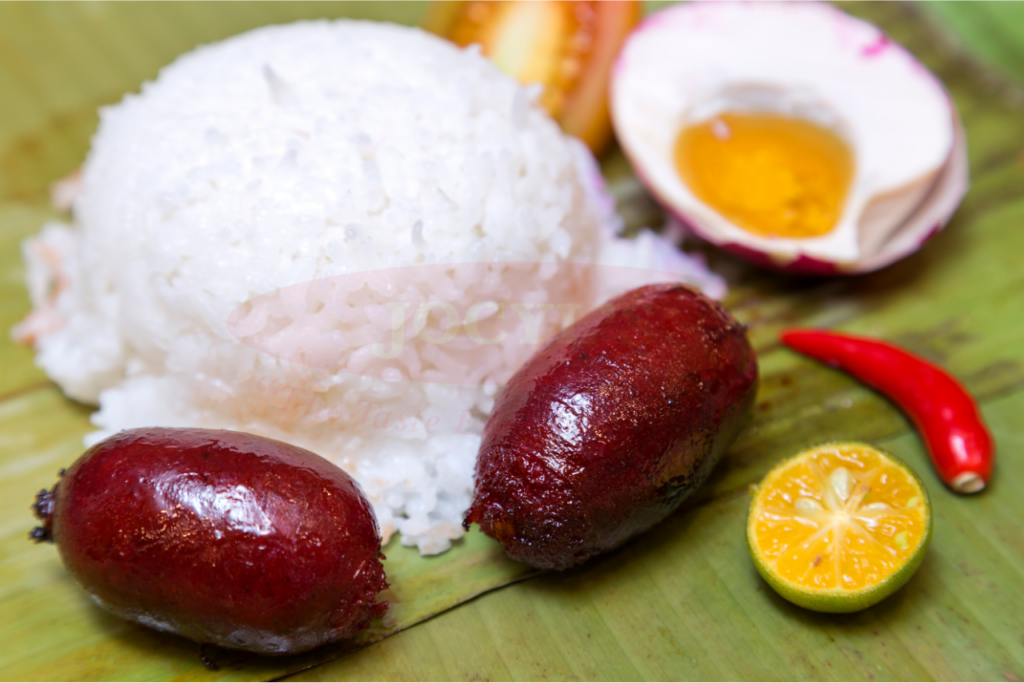
In the Philippines, Longaniza has become an iconic culinary treasure. Filipino Longaniza is known for its sweet and savory profile, which sets it apart from other variations. The sausage is typically made using ground pork, mixed with a combination of sugar, garlic, vinegar, and various local spices. The addition of anise or annatto seeds lends a vibrant reddish hue to the sausage.
The unique flavor of Filipino Longaniza is a result of the interplay between the sweetness from sugar and the tanginess of vinegar. This delightful combination, along with the aromatic blend of spices, creates a harmonious balance that pleases the palate.
Filipino Longaniza is often enjoyed as a breakfast staple, paired with garlic fried rice and eggs. It is also a popular filling for sandwiches or used in traditional dishes like Pancit and Sinangag. The distinct taste and cultural significance of Filipino Longaniza make it a beloved part of Filipino cuisine.
Mexican Longaniza: A Fusion of Flavors
Immerse yourself in the world of Mexican Longaniza, a vibrant and flavorful sausage that showcases a fusion of indigenous ingredients with Spanish influences. Experience the diverse regional variations found across Mexico, each offering its unique twist on this beloved culinary gem.
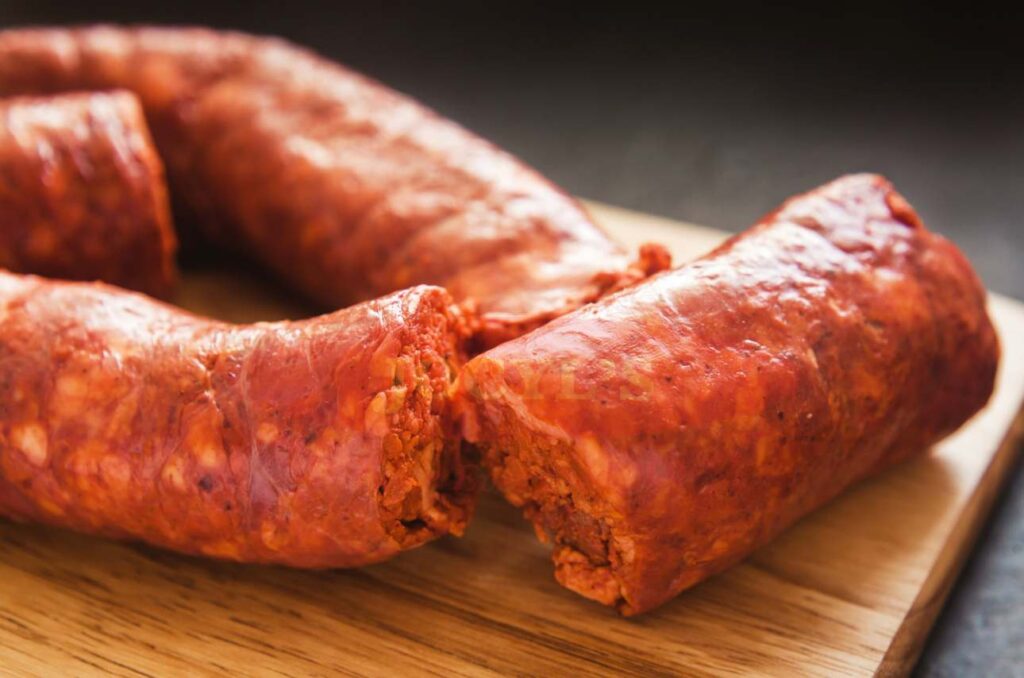
Mexican Longaniza embodies the rich tapestry of Mexican cuisine. The sausage draws inspiration from both indigenous traditions and Spanish colonial influences. It typically features a combination of pork, spices, and herbs, which varies from region to region.
In different parts of Mexico, Longaniza takes on diverse characteristics. For instance, in Oaxaca, the use of regional chilies like pasilla and ancho adds a smoky and mildly spicy flavor. In Yucatan, achiote paste imparts a vibrant color and unique taste to the sausage. Each region brings its local spices, herbs, and cooking techniques, resulting in a kaleidoscope of flavors and textures.
Mexican Longaniza is incredibly versatile and finds its way into numerous dishes. It can be enjoyed in tacos, tortas, or as a filling for empanadas. The bold and vibrant flavors of Mexican Longaniza have captivated taste buds around the world, making it a cherished component of Mexican cuisine.
Other International Varieties
Uncover the lesser-known variations of Longaniza from countries such as Portugal, Brazil, Argentina, and the Caribbean. Journey through these culinary landscapes and gain insights into the unique ingredients and cooking traditions that shape these international renditions of Longaniza.
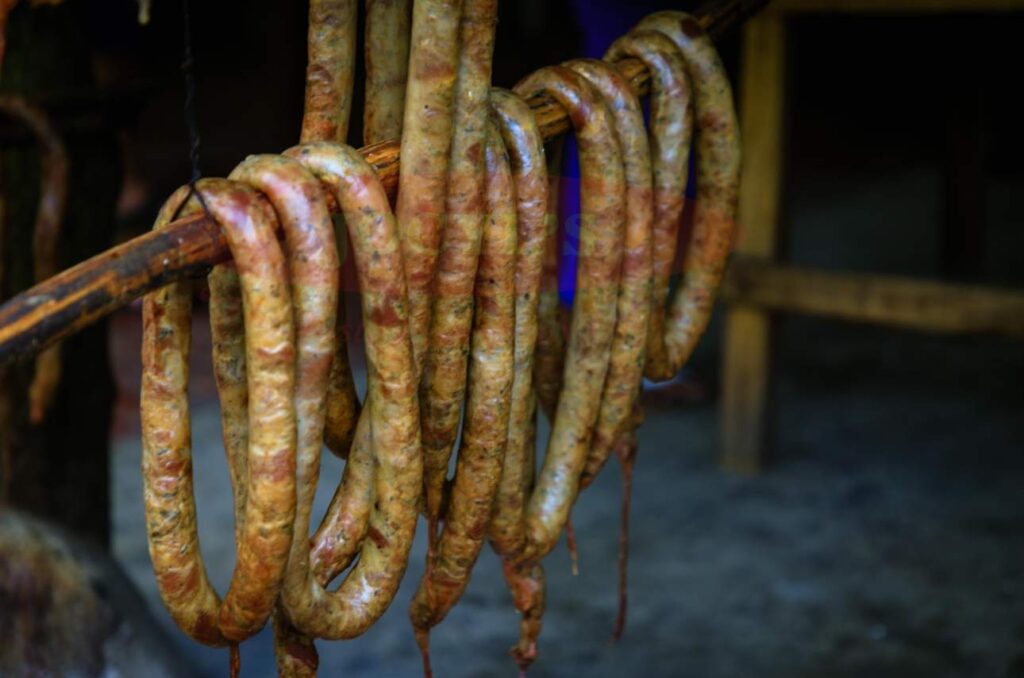
Portuguese Longaniza, known as Linguiça, features a combination of pork, garlic, and paprika. It is a beloved sausage in Portugal and has also made its mark in Brazilian cuisine, where it is a staple in dishes like Feijoada, a hearty black bean stew.
In Argentina, Longaniza Criolla takes center stage, showcasing the country’s passion for grilling and open-fire cooking. It typically includes a mix of ground pork and beef, infused with garlic, paprika, and regional herbs, creating a smoky and robust flavor.
The Caribbean islands offer their unique twists on Longaniza as well. In Puerto Rico, Longaniza is made with a blend of pork, garlic, oregano, and annatto, resulting in a savory and aromatic sausage. Similarly, the Dominican Republic presents its version of Longaniza, which incorporates local spices and herbs for a distinctive taste.
These international variations of Longaniza provide a glimpse into the global reach and adaptability of this beloved sausage. As you explore these unique flavors and culinary traditions, you’ll gain a deeper appreciation for the diverse interpretations of Longaniza around the world.
Longaniza in Modern Cuisine – History and Origin
Longaniza in Contemporary Cooking
Discover how Longaniza has evolved to meet the demands of modern palates, offering exciting and innovative recipes that showcase the versatility of this beloved sausage. Explore the creative culinary applications that have emerged, transforming Longaniza into a star ingredient in modern cuisine.
Longaniza has undergone a remarkable transformation to adapt to the evolving tastes and preferences of contemporary diners. Chefs and home cooks alike have embraced this flavorful sausage, incorporating it into a wide range of dishes that highlight its unique qualities.
In modern cooking, Longaniza has found its way into pasta dishes, where its savory profile complements the richness of creamy sauces. It adds depth and complexity to risottos, creating a delightful contrast with the grains. Longaniza has also become a favorite ingredient in gourmet pizza toppings, bringing its robust flavors to the forefront.
The versatility of Longaniza extends beyond traditional savory applications. It has also found a place in modern brunch recipes, such as Longaniza breakfast burritos or frittatas, where its savory notes pair perfectly with eggs and vegetables. In innovative culinary creations, Longaniza has even been used in unexpected ways, like incorporating it into spice-infused cocktails or as a topping for gourmet hot dogs.
Longaniza as a Culinary Trend
Explore the rising popularity of Longaniza in international culinary scenes and its integration into fusion cuisines. Examine how this flavorful sausage has become an influential ingredient, shaping contemporary food trends.
Longaniza has captured the attention of chefs and food enthusiasts worldwide, making its mark as a culinary trendsetter. Its versatility and distinctive flavor have made it a sought-after ingredient in fusion cuisines that blend diverse culinary traditions.
In the realm of fusion cuisine, Longaniza has found its way into innovative creations that combine elements from different cultures. Whether it’s incorporating it into Asian-inspired dishes like Longaniza stir-fry with vegetables and noodles or infusing it into Latin American-inspired tacos with unique flavor combinations, the possibilities are endless.
The rise of Longaniza in contemporary food trends is not only due to its taste but also its cultural significance. Food enthusiasts and consumers are increasingly seeking authentic and globally-inspired flavors. Longaniza represents a bridge between traditional culinary heritage and modern palates, satisfying the desire for bold and exciting taste experiences.
As Longaniza continues to gain recognition and popularity, we can expect to see it featured in more diverse and creative culinary creations. Its presence in modern cuisine serves as a testament to its enduring appeal and its ability to adapt to the ever-changing culinary landscape.
Conclusion to Longaniza History and Origin
In conclusion, the journey of Longaniza from its ancient roots to its status as a modern delicacy is a testament to the enduring appeal of this flavorful sausage. By unraveling its history and origin, we gain a deeper appreciation for the cultural significance and culinary traditions associated with Longaniza. Whether enjoyed in traditional recipes or innovative dishes, Longaniza continues to captivate the taste buds of food enthusiasts worldwide, making it a timeless culinary treasure.
Jocyl’s Social Media:
https://www.facebook.com/jocylsfoods
https://www.instagram.com/jocylsfoods
https://www.twitter.com/jocylsfoods
https://www.pinterest.ph/jocylsfoods
https://www.tiktok.com/@jocylsfoodsproducts
Recent Posts
- The Ultimate Guide to Authentic Filipino Breakfast: Why Chorizo de Kalibo Is Taking 2026 to the next level!
- Ultimate Aklan Pasalubong Guide: Authentic Filipino Treasures
- How to Cook Longganisa Without Oil: Easy, Healthy & Delicious Guide
- Ultimate Guide: How to Cook Ilonggo Longganisa – Perfect Every Time!
- What is Ilonggo Food? Discover the Rich Flavors of Western Visayas Cuisine
Recent Comments
Archives
- October 2025
- September 2025
- August 2025
- July 2025
- May 2025
- April 2025
- March 2025
- February 2025
- January 2025
- November 2024
- October 2024
- September 2024
- August 2024
- June 2024
- March 2024
- February 2024
- January 2024
- December 2023
- November 2023
- October 2023
- August 2023
- July 2023
- June 2023
- May 2023
- April 2023
- March 2023
- February 2023
Tags
- Aklan
- Aklan Pasalubong
- Boracay
- Boracay Food
- Boracay Island
- Boracay Pasalubong
- boracay snacks
- Boracay Souvenirs
- Breakfast
- Chicken
- chicken tocino
- Chori Burger
- chorizo
- ChorizoDeKalibo
- chorizo recipe
- Delicacies
- embutido
- embutido recipe
- Filipino Chorizo
- Filipino Cuisine
- filipino food
- Filipino Longganisa
- Filipino Sausage
- foodie guide
- homemade
- Iloilo
- Iloilo Chorizo
- Iloilo Food
- Iloilo Longganisa
- Iloilo Pasalubong
- ingredients
- JocylsFoods
- longaniza
- longganisa
- longganisa recipe
- meat
- Pasalubong
- pinoy recipes
- pork tocino
- recipe
- Recipes
- skinless longganisa
- snacks
- tocino
- tocino recipe

